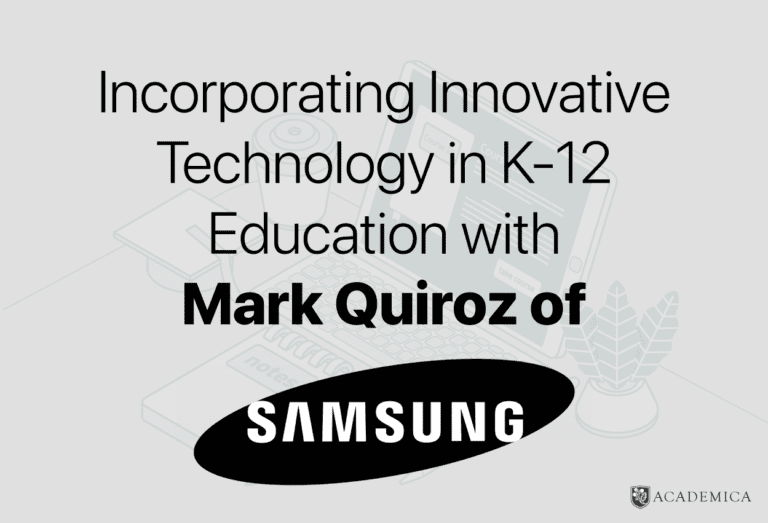Blogs







Samsung has been instrumental in assisting Academica and Academica-supported charter schools with the implementation of “The Classroom of the Future". Episode 94 of Charter School Superstars, the fifth episode of “The Classroom of the Future” series, features Mark Quiroz, the Vice President of Marketing for the Display Division of Samsung.
As Mark said, one of the reasons why Samsung wanted this partnership with Academica was because they desired to do more with its interactive displays in education. By doing so, he believes, it would have enabled Academica Supported Schools to accomplish the mission of educating the future and collectively moving into hybrid teaching. He emphasized how education is key to the culture in Samsung. They require hours of training for professional development to make sure that employees are consistently learning. Mark summarized the significance of education when he said, “We see the pipeline of our future growth embedded in education because that’s where the young minds of today will be the future leaders of tomorrow… [education] is synonymous with what we stand for."
When asked about the inspiration for partnering with Academica and supported schools, he specifically mentioned Academica’s vision. He discussed how Academica has a unique and clear vision for what we want to deliver to our students. Also, he mentioned his admiration for the well-thought strategy with which Academica planned on implementing the hybrid approach—all to support different learning styles and adjust to the pandemic. As he said, “Academica was onto something for how learning has to evolve.” After all, The Classroom of the Future is highly adaptable to different situations, even though Academica implemented it during COVID-19.
Although the Samsung partnership with Academica may have provided many supported charter schools with the necessary technology, Mark says Samsung’s involvement in education is not done yet. Some of the focuses for the future include keeping the products easy to use for teachers, increasing the longevity of products to make them better investments, and having flexibility in purchasing the displays. There is also motivation to make the technology interactive for the students. All these next steps are inspired by the desire to lower the barriers for educational institutions to use and finance these devices and to address the needs of students, teachers, and administrators.
